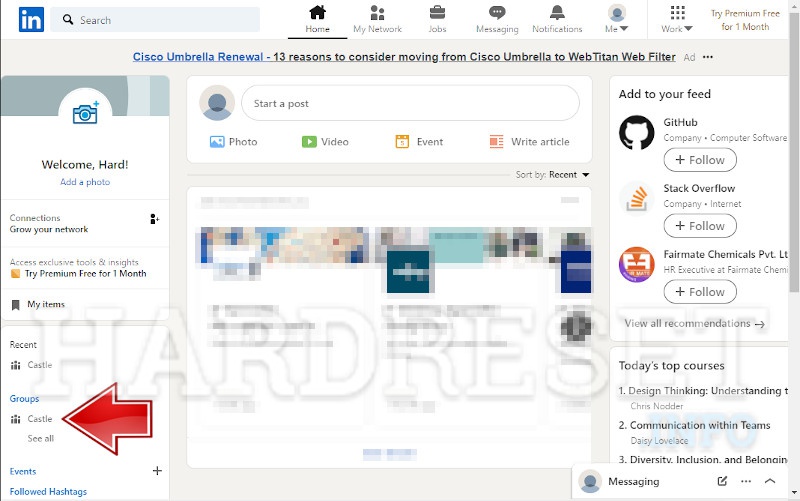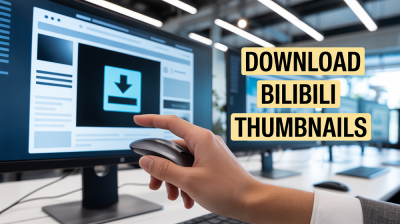When it comes to crafting a standout LinkedIn profile, every little detail counts. One often overlooked aspect is how you present your work experience. Rather than listing every single position separately, grouping similar roles can help simplify your history and give potential connections or employers a clearer picture of your expertise. In this post, we’ll explore the benefits of grouping your work positions on LinkedIn and how to do it effectively.
Why Grouping Work Positions Matters

Transforming your LinkedIn work experience section from a long, tedious list into a streamlined, organized representation of your career can significantly impact how others perceive you. Here’s why grouping your work positions is important:
- Enhances Readability: A cluttered profile can overwhelm recruiters or potential partners. By grouping positions, you make it easier for them to see your key roles and responsibilities at a glance.
- Showcases Career Progression: If you've held multiple roles at the same company or in similar industries, grouping them together emphasizes your career growth and progression, making your experience look more cohesive.
- Highlights Relevant Skills: Grouping positions allows you to aggregate relevant skills and accomplishments that might be spread out across multiple entries. This can help paint a more comprehensive picture of what you bring to the table.
- Avoids Redundancy: Listing similar roles separately can lead to redundancy. Grouping allows you to highlight unique achievements under a single umbrella, reducing repetitive information and making your profile more engaging.
- Improves Engagement: A well-organized profile is more likely to catch the eye of potential employers or networking contacts. When your experience is presented clearly, it invites more people to explore your profile further.
In essence, grouping your work positions isn’t just a strategy—it's a crucial component of presenting a powerful professional narrative that can open doors. So let’s get started on optimizing your LinkedIn presence!
3. Steps to Effectively Group Work Positions

Grouping your work positions on LinkedIn can significantly enhance the readability of your profile and highlight your relevant experience. Here’s how to do it effectively:
- Identify Related Roles: Start by identifying positions that are similar in nature. For example, if you've held multiple marketing roles, these can be grouped together under a single heading.
- Create a Catchy Header: Use a headline that encapsulates the grouped roles effectively. Something like "Marketing Professional with Experience in Digital and Traditional Campaigns" can work wonders.
- Consolidate Duties and Achievements: Instead of listing each role separately, consolidate the duties and achievements. For instance, mention your key responsibilities across the roles and quantify your successes.
Example:- Managed marketing campaigns leading to a 30% increase in leads.
- Developed social media strategies that boosted engagement by over 50%.
- Use Bullet Points Wisely: When detailing your duties, use bullet points to keep them concise and easy to read. Aim for 3-5 impactful bullet points that showcase your best work.
- Regularly Update Your Grouping: As you gain new experiences, revisit this section to ensure it remains relevant. This habit keeps your profile fresh and engaging.
By following these steps, you’ll create an organized and eye-catching LinkedIn profile that highlights your expertise and experience effectively!
4. Using LinkedIn Features to Organize Your Profile

LinkedIn offers several features that can help you organize your profile in a way that makes it appealing to potential employers or connections. Here’s how to make the most of what LinkedIn has to offer:
- Sections and Headings: Utilize LinkedIn's built-in sections wisely. You have options like “Experience,” “Projects,” and “Skills” that allow you to construct a well-rounded profile. Customizing the order of these sections can also lead to a more impactful presentation.
- Use the "Featured" Section: Don’t forget to showcase key accomplishments or pieces of work in the “Featured” section. This could include articles you've written, presentations, or significant projects.
- Skill Endorsements: Keep your skills up to date and relevant to the positions you’re grouping. Encourage connections to endorse these skills, as it adds credibility to your profile.
- Recommendations: Ask colleagues or supervisors to write recommendations that speak specifically to your grouped experiences. These testimonials add depth and validation to your professional narrative.
- Use Keywords Strategically: Make sure your profile contains relevant keywords that potential employers may search for. This helps in improving your visibility on the platform.
By leveraging these LinkedIn features, you not only organize your profile but also optimize it for better visibility and connections. So, roll up those sleeves and start refining!
5. Best Practices for Presenting Grouped Work Positions
When you decide to group your work positions on LinkedIn, it’s crucial to present them in a way that's both clear and engaging. Here are some best practices to help you make the most out of this approach:
- Choose Relevant Roles: Group together positions that share similar responsibilities or are within the same industry. This helps create a cohesive narrative of your career path.
- Use Descriptive Titles: Instead of listing each job title separately, use a collective title that accurately represents the group’s overall theme, like "Marketing Specialist" or "Software Development Roles."
- Highlight Key Achievements: In the description, focus on notable achievements or skills that emerged from these roles. Use bullet points to emphasize the most significant milestones.
- Optimize for Keywords: Think about the keywords recruiters might search for. Include relevant terms that relate to your skills and experience to enhance discoverability.
- Maintain Clarity: Be concise; don’t overwhelm your audience with too much information. Aim for clarity in your descriptions, making sure it’s easy to understand your career journey.
Following these best practices not only enhances the presentation of your grouped positions but also helps in attracting the attention of potential employers and industry professionals.
6. Examples of Well-Grouped Work Positions
Having a practical understanding of how to group work positions on LinkedIn can be incredibly helpful. Here are a couple of examples that illustrate effective grouping:
| Grouped Position Title | Individual Positions Included | Key Skills/Achievements |
|---|---|---|
| Project Management Roles |
|
|
| Digital Marketing Experience |
|
|
These examples showcase not just the positions held but also highlight the skills and achievements that matter most. By adopting a similar structure for your LinkedIn profile, you can effectively attract the right opportunities.
Streamline Your LinkedIn Profile by Grouping Work Positions
Having a well-organized LinkedIn profile is crucial for personal branding and professional networking. One effective strategy to enhance your profile's readability and impact is to group your work positions. This method not only makes your experience easier to digest but also highlights your career progression more effectively. Below are some key benefits and tips on how to implement this approach:
Benefits of Grouping Work Positions
- Clarity: It simplifies your work history, making it easy for recruiters to scan and understand.
- Showcases Growth: Grouping helps demonstrate career advancement within similar roles or companies.
- Focus on Skills: By clustering similar positions, you can emphasize the skills you've gained.
How to Group Work Positions Effectively
- Identify Related Positions: Consider roles with overlapping responsibilities or those held at the same company.
- Create a Summary: Write a brief overview of your contributions and achievements in that grouping.
- Use Bullets: List major accomplishments, projects, or skills learned under each grouped position.
For example, if you've held multiple marketing roles at different companies, you can group them like this:
| Work Experience | Description |
|---|---|
| Marketing Specialist (Company A) | Increased brand engagement by 30% through targeted campaigns. |
| Marketing Coordinator (Company B) | Managed social media strategies, enhancing followers by 25%. |
| Marketing Manager (Company C) | Led a team to execute a successful product launch, resulting in a 40% sales boost. |
By implementing these strategies, you will enhance your LinkedIn profile's effectiveness and increase your chances of attracting the right opportunities. Remember that a streamlined profile reflects professionalism and clarity.
Conclusion and Final Thoughts
Grouping your work positions on LinkedIn not only simplifies your profile but also provides a powerful narrative of your professional journey. By following the outlined steps, you can create a captivating and easy-to-read profile that resonates with potential employers and connections.










